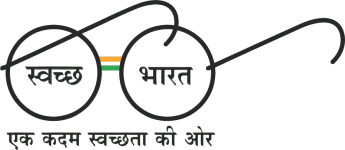The Common Admission Test (CAT) is a computer-based test for admission in a graduate management programs. The test consists of three sections: Verbal Ability and Reading Comprehension (VARC), Data Interpretation and Logical Reasoning (DILR) and Quantitative Ability (QA). The exam is taken online over a period of three hours, with one hour per section. In 2020, due to the COVID precautions, IIM Indore decided to conduct the CAT Exam in 2 hours with 40 minutes devoted to each section.
The Indian Institutes of Management (IIMs) started this exam and use the test for selecting students for their business administration programs (MBA or PGDM). The test is conducted every year by one of the IIMs based on a policy of rotation. CAT 2023 exam will be held on November 28, 2021 in 158 cities.
Before 2009, CAT was a paper based test conducted on a single day for all candidates. The pattern, number of questions and duration have seen considerable variations over the years.
Eligibility for CAT
The candidate must satisfy the below-specified criteria:
Hold a bachelor's degree, with no less than 50% or equal CGPA (45% for Scheduled Caste (SC), Scheduled Tribe (ST), and Persons with Disability (PwD)/Differently Able (DA) classification)
The degree should be granted by any of the universities consolidated by an act of the central or state statutory body in India or other instructive organizations built up by an act of Parliament or pronounced to be considered as a university under Section 3 of the UGC Act, 1956, or possess an equivalent qualification recognized by the Ministry of HRD, Government of India.
Competitors appearing for the final year of bachelor's degree/equivalent qualification examination and the individuals who have finished degree prerequisites and are anticipating results can likewise apply. If selected, such applicants will be permitted to join the program temporarily, only if they present a certificate most recent by June 30, 2020, from the principal/registrar of their college/institute (issued at the latest June 30, 2020) expressing that the competitor has finished every one of the prerequisites for acquiring four-year or three-year college education/identical capability on the date of the issue of the certificate.
Exam pattern
The Common Admission Test (CAT), like virtually all large-scale exams, utilizes multiple forms, or versions, of the test. Hence there are two types of scores involved: a raw score and a scaled score.
The raw score is calculated for each section based on the number of questions one answered correctly, incorrectly, or left un-attempted. Candidates are given +3 points for each correct answer and -1 points for each incorrect answer. No points are given for questions that are not answered. The raw scores are then adjusted through a process called equating. Equated raw scores are then placed on a common scale or metric to ensure appropriate interpretation of the scores. This process is called scaling.
The change in the total number of questions and number of questions per section in cat merely happens, on a broader perspective, there are 100 questions combining each section. The very first section which is the verbal ability and reading comprehension (VARC) contains 34 questions, further bifurcating 24 questions of reading comprehension and 10 questions of verbal ability, then next section is of data interpretation and logical reasoning (DILR) which contains 32 questions and the last section is of quantitative ability (QA) which contains 34 questions making it to 100 questions in total.
CAT is conducted in two sessions.





